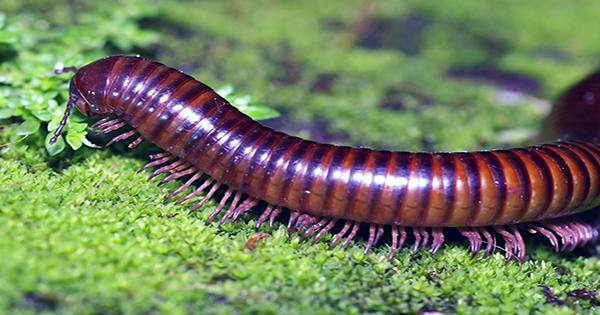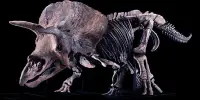What makes a millipede different from a centipede? Millipedes have two pairs of legs beneath each segment, whereas centipedes only have one, making them the Myriapoda’s leggy blonde-haired person. The term millipede comes from the Latin words Mille (thousand) and ped (foot), garnering them the moniker “thousand leggers.” For a long time, this was a misnomer because the most legs ever found on a millipede were 750, but that all changed today.
Eumillipes persephone is a millipede discovered 60 meters (197 ft) underground in a mineral exploration drill hole in Australia’s Eastern Goldfields Province. E. persephone, in typical Australian style, went big with its body plan and currently holds the record for the most legs on a single animal, with 1,306 legs. It was discovered and reported in the scientific journal Scientific Reports.
Eumillipes persephone, the world-record-breaking millipede’s scientific name, is formed from the Greek word for truth (eu) and the Latin word for thousand foot (persephone) (mille, pes). It is a reference to this multi-legged insect being the only “genuine millipede,” since it has over a thousand legs, unlike the phonies with less than 750. Persephone was selected in honor of Persephone, a Greek goddess of the underworld who enjoyed living underground.
What E. persephone makes up for in (albeit small) legs and a lengthy, noodly body (330 segments!) it appears to lack elsewhere, with no eyes and no coloration. Many kinds of millipedes are troglomorphic, meaning they spend their whole lives underground or in caves, and this is not the first one to discover without peepers. They were most likely abandoned somewhere along their evolutionary pathways when eyes grew obsolete in the absolute darkness.
Therefore, it is an exciting find for Myriapoda aficionados, and one that the study’s researchers think indicates there is much more to found in the mining area, emphasizing the location as a biodiversity hotspot.
“Whether troglomorphic Eumillipes species occur in other locations of Western Australia is an unknown, but the potentially fruitful path of discovery,” the researchers concluded. Because the Eastern Goldfields Province of Western Australia might be a treasure trove of many-legged animals, the researchers are advocating for improved wildlife protection in the area in order to preserve biodiversity. While the mineral-rich ground is ideal for mining, it is also a writhing subterranean environment of scientific curiosity.















